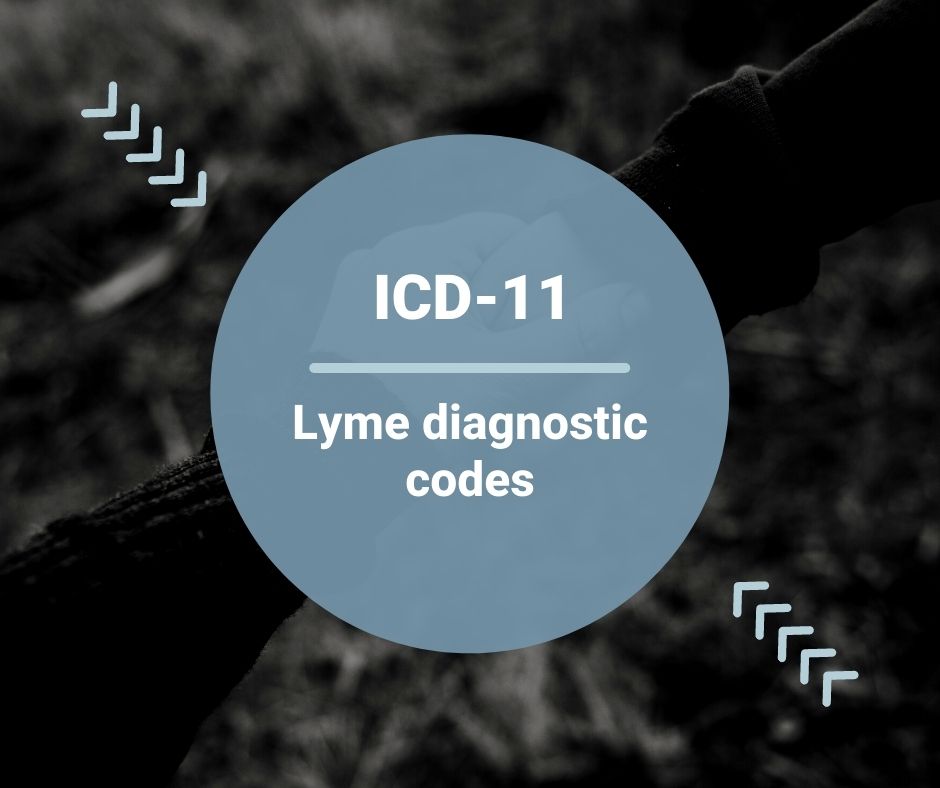What you need to know about the new Lyme ICD-11 diagnostic codes

By Kris Newby, Invisible International
The World Health Organization (WHO) has added 15 new medical diagnostic codes for Lyme disease, which replaced four older codes and officially went into effect on January 1, 2022.
Over time, these codes will provide patients with more avenues for medical insurance reimbursement and enable researchers to better track and analyze Lyme disease complications, treatments, and outcomes.
The International Classification of Diseases, 11th Edition (ICD-11), replaces the ICD-10 as the foundation for identifying health trends and statistics worldwide. It is also the international standard for reporting mortality, morbidity, and other conditions affecting health.
While the WHO recognized Lyme borreliosis to be a “disease of consequence” in the 1990s, there were only four Lyme ICD codes until now (acute Lyme, and Lyme arthritis, meningitis, and polyneuropathy).
These codes didn’t recognize chronic Lyme or many of the serious, potentially fatal complications of the disease that have come to light over the last three decades. This resulted in medical insurance denials for seriously ill Lyme patients and the loss of health data that could be used in evaluating diagnoses and treatments.
What does this mean for Lyme disease patients today? Well, it may take some time for the new codes to be adopted by medical insurers, but the incorporation of them into electronic health records systems will enable researchers to better analyze Lyme patient symptoms, treatments, and outcomes.
In the interim, Lyme patients can learn more about these codes and watch an interview explaining more about them.
New ICD-11 Lyme Codes
Lyme borreliosis (1C1G)
- Early cutaneous Lyme borreliosis, Stage 1 Lyme disease (1C1G.0)
- Disseminated Lyme borreliosis (1C1G.1)
- Lyme neuroborreliosis, Myelitis associated with Lyme disease (1C1G.10)
- Lyme carditis (1C1G.11)
- Ophthalmic Lyme borreliosis (1C1G.12)
- Lyme arthritis (1C1G.13)
- Late cutaneous Lyme borreliosis (1C1G.14)
- Other specified disseminated Lyme borreliosis (1C1G.1Y)
- Disseminated Lyme borreliosis, Stage 2 (1C1G.1Z)Other
- Dementia due to other specified diseases classified elsewhere: Dementia due to Lyme Disease (6D85.Y)
- Infectious panuveitis: Infectious panuveitis in Lyme disease (9C20.1)
- Infectious intermediate Chorioditis: Infectious intermediate uveitis in Lyme disease (9B66.1)
- Other specified white matter disorders due to infections: Central Nervous System demyelination due to Lyme borreliosis (8A45.0Y)
- In addition, congenital Lyme can be coded with “KA6Y Other specified infections of the fetus or newborn” and “XN13C Borrelia Burgdorferi.”
Kris Newby is Communications Director of Invisible International, a 501(c)(3) nonprofit foundation dedicated to reducing suffering from invisible illnesses.




















We invite you to comment on our Facebook page.
Visit LymeDisease.org Facebook Page